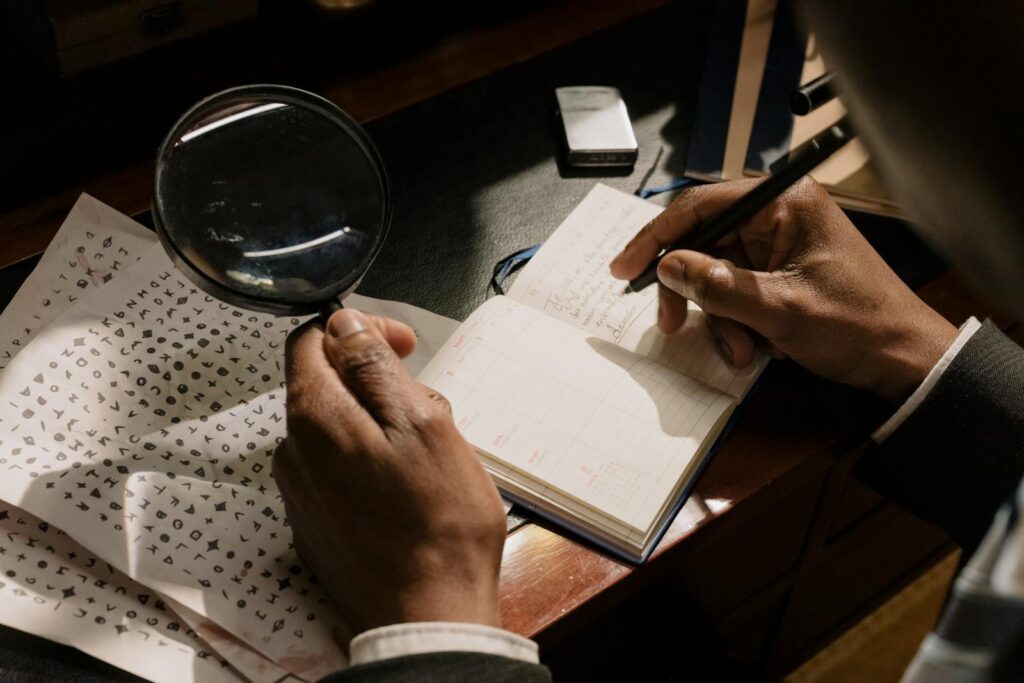Now Reading: Changes in body post death and Medico-Legal Aspects
-
01
Changes in body post death and Medico-Legal Aspects
Changes in body post death and Medico-Legal Aspects
There is a reason why Forensic Science is a multi-disciplinary subject. When we want to study changes that occur after death, there will be various areas involved. For instance, soon after death, enzymatic changes start to occur, involving methodology of biochemistry and cell biology. PMI is often estimated by employing methods of pathology. After a few days, when gross post-mortem decomposition starts to take place disciplines such as ecology, entomology, taphonomy and pathology will be involved. And finally after months when the body becomes skeletonised, fields of archaeology and anthropology will come into play. Keeping in mind there are many other fields which will be needed for knowing how the victim died. In this article, we will be discussing how post death changes that occur in human remains.
TERMINOLOGIES USED
Adipocere- waxy substance formed during decomposition
Contusion- are injuries to the tissues and organs produced by blunt external violence and result from compression.
Forensic Taphonomy- The use of experimental and analytical approaches to estimate PMI and to determine the cause and manner of death
PMI- Post Mortem Interval
Petechiae- pinpoint haemorrhages produced by rupture of small vessels, predominantly small venules
GENERAL CHANGES WITH REFERENCE TO STAGES OF DECOMPOSITION
Deokar and Patil (2014) mentioned in their study for an attempt to estimate PMI using vitreous magnesium levels “that longer is the time interval between death and the examination of the body the wider will be the limits of probability”. Therefore, it becomes necessary for first responders and crime scene units to know about what changes have had occurred in body after death. According to Gunn (2018), stages of decomposition can be divided roughly into four stages: Fresh, Bloat, Putrefaction and Putrid Dry remains.
In fresh stage, blood circulation ceases, the skin and mucous membrane starts to become pale and tissues and cells are deprived of oxygen hence they start dying at different rates (Gunn, 2018). The cornea of the eyes becomes dull and a film may appear over the eye (Fisher, 2003). One of the major changes that happen is Algor Mortis i.e. cooling of body after death. This principle was and is still used at some places for calculating PMI i.e. Post Mortem Interval. The time since death can be calculated by the formula
Time since death = 37°C – Rectal temperature (C) + 3
The liver/rectal temperature is measured however, one of the issues with this type PMI is that the body temperature post-death depends upon a lot of factors for instance, whether the remains was outside in a garden or inside in a car or maybe a freezer. We will discuss the changes that take place post death depending on cause of death shortly after this section.
Livor Mortis or Post Mortem Lividity is said to take place after 20-120 minutes of death. It is a state of hypostatis wherein purple-bluish discolouration can be observed because of the settlement of blood in veins and capillaries (Gunn, 2018). For example, if a body is lying on its back, a characteristic pattern can be observed on the back side, with pale regions signifying where the pressure of body constricted the vessels while the other reddish parts due to settling of blood in veins. Often people who are not familiar with Livor Mortis misinterpret these signs as bruising (Dimaio and Dimaio, 2001)
The muscles of the body become flaccid and the joints relax such that the height of individual is increased by approximately 3cm (Gunn, 2018). This happens immediately after death. The flaccidity moreover causes sphincters of the body to loosen followed by release of urine, faeces or regurgitation of gut contents. However, within 3-4 hours of death a phenomena known as Rigor Mortis starts to occur (Gunn, 2018). Rigor is established in 9-12 hours, persists for 12-24 death (Deokar and Patil, 2014). The whole body is stiffened and becomes rigid by 12 hours. Rigor starts disappearing after 18-36 hours and passed off in 24-36 hours after death (Deokar and Patil, 2014). Often, it is required, especially in cases of missing persons, to acquire the fingerprints of the deceased but once the rigidity is complete it might be extremely difficult to take fingerprints due to the fact that fingers bent toward the palm and cannot be straightened because they are so inflexible (Fisher, 2004). Rigor Mortis disappears gradually as the body decomposes (Dimaio and Dimaio, 2001).
Superficial changes that occur during decomposition include greenish discoloration in right iliac fossa ie. the lower quadrants of the abdomen in 18-36 hours (Deokar and Patil, 2014). Followed by swelling of face because of the bacterial gas formation and body soon undergoes bloating and by this time it becomes pale green to green-black in colour. A point which is to be noted is that due to bloating, the purge fluid that drains from the mouth and nose is often misinterpreted as blood with suspicion of head trauma (Dimaio and Dimaio, 2001). The bloating of the body is caused by Clostridia and other enterobacteria, when they break down the dead cells of intestines.
“After the skin and soft tissues are removed the body is reduced to the hard skeleton” (Gunn, 2015).
As the body progresses decomposition, insect activity starts to pertain. Range of insects are attracted to different stages of decomposition and insect activity often helps us determining three main things- PMI, whether the usage of drug was involved and geographical location.
Adipocere occurs in body which are most likely buried in moist environments especially submerged in water during winter months (Dix and Calaluce, 1999). After death, autolysis and bacterial decomposition of Triglycerides result in production of glycerol and free fatty acids (Gunn, 2018). These have a characteristic odour. Widespread of adipocerous slows down the decomposition ensuring the preservation of body for years (Gunn, 2018).
A study by Byard and Heath (2014) acknowledged the problems at the post-mortem examination while differentiating between ante-mortem and post-mortem injuries. In particular, they highlighted the post-mortem ant lesions and how to distinguish them with ante-mortem injuries. Their study demonstrated that “not all insect predation on bodies obscures information” (Byard and Heath 2014).
In cases of terminal cardiac failure with slow lingering death, the livor mortis appears antemortem which should be taken into consideration during post-mortem examination (Dimaio and Dimaio, 2001).
CHANGES IN BODY ACCORDING TO CAUSE OF DEATH
Fire and Explosives
In flame burns, the body is charred; resulting is partial thickness burns and singed hair. IN contact burns, trans-epidermal necrosis occurs in less than a second. Radiant heat burns give prolonged exposure of low heat so as the skin becomes light brown and leathery. If prolongs, severe charring can also occur. According to Dimaio and Dimaio (2001), it is nearly impossible to distinguish between antemortem and post mortem burns. When highly charred, skin splits exposing the muscle, which shows rupture caused by heat.
A burned bone had gray-white colour and may crumble on handling. Also one thing that is easy to distinguish is the post-mortem epidural hematoma. Post death epidurals are chocolate brown in colour with honeycomb appearance (Dimaio and Dimaio, 2001).
Freezing
Stokes, Forbes and Tibbett (2008) found that in a controlled soil environment, interment of skeletal muscle tissue has a considerable effect on chemical properties of the soil surrounding the decomposing soft tissue. On the contrary, freezing was found to have no significant impact on decomposition compared to unfrozen samples in the study by Stokes, Forbes and Tibbett (2008) using skeletal muscle tissue.
Poisoning
In cases of death by carbon monoxide, the livor mortis is of cherry-red to pinkish colour because of the carboxyhemoglobin (Dimaio and Dimaio, 2001). Similar discolouration is observed in cyanide deaths however it is said to be little darker. Moreover, cyanide poisoning also causes cyanosis turning the skin, fingernails and mucous membrane blue (Gunn, 2018).
In cases of Arsenic poisoning, large quantity of thin stool is also observed, often containing blood (Fisher, 2003). Poisoning by Strychnine causes convulsions and face is fixed in a grin. Also, different coloured materials in the vomit can give clues to the type of poisoning. Fisher (2003) has explained loads of signs for different poisoning.
Gun Shot Wound
Firearm injuries are often covered in blood, therefore it is sometimes difficult for someone not with medical training to distinguish it with external mechanical violence. When a bullet strikes the skin, it leaves an “abrasion ring” (Fisher, 2001) around the entrance wound which may not necessary have an exit wound. The diameter of this ring can be used to determine the calibre of the bullet. Depending upon the velocity of Gunshot, there may or maynot be presence of gunshot residue near the wound. The morphology of the entry wounds can also be used to determine the type of firearm used and distance from it was fired.
Buried Human Remains
Carter and Tibbett (2006) attempeted to study the decomposition of remains buried in soil. It is a generally accepeted fact that burying decreases the rate of decomposition. Some believe it slows down the rate by 8 times as compared to decomposition above ground (Rodriguez, 1997). However more researched need to be done around this topic. However, an increased temperature such as in summer will increase the rate of decomposition in comparison to winters (Morovic and Budak, 1965). Other factors such as moisture, soil texture, pH and whether there were any associated materials inside buried with the body affect a lot about how a body undergoes decomposition below ground (Tibett and Carter, 2008). Tibett and Carter (2008) have provided with some excellent examples and case scenarios for buried remains and factors affecting them.
Body found in Glacial Environment
A study was performed by Pilloud et al. (2016) in an attempt to understand how factors that play role in glacial environmental setting alter the human remains. This study proved to be helpful in analysing post mortem and ante mortem injuries. Pilloud et al. (2016) observed that there were abrasions on cortical bone, crushed factor margins on skeletal elements, extensive preservation of soft and skeletal tissues, adipocere formation, and oblique shearing of long bone ends along with many other inspected area. Most definitely, more work is needed to document effects on human remains as glaciers are retreating worldwide.
Asphyxia
Suffocation, Strangulation and Chemical Asphyxia; the three main categories of asphyxial deaths are caused when humans are not receiving or utilising ample oxygen. In such cases, Petechiae are observed post death. Cyanosis is also observed when less than 5g of reduced haemoglobin is present (Dimaio and Dimaio, 2001).
Body inside water
In cases where a body is found inside water, there are two possible scenarios- either the individual was already dead when thrown in water or was drowned. Nevertheless, in warm weather the body becomes puffy and skin turns black within few days post death. In addition, if remains are found in a dry placed exposed to sun and air, the tissues do not get putrefied, instead they with time dry up and the body is mummified (Fisher, 2003).
There are endless possible scenarios how a body is dumped or found by the investigators. Therefore, there is need for more forensic researchers especially in today’s’ world wherein criminals are coming up with new ways to commit crime. In order to ace the investigation, all the people such as police, CSIs, forensic units should be aware of primary scene examination. For instance, even if the medical officer/ coroner are late to arrive on scene of crime, the first responders should be able to provide a preliminary examination of the body and scene.
REFERENCES
Byard, R.W. & Heath, K.J. 2014, “Patterned postmortem ant abrasions outlining clothing and body position after death”, Journal of Forensic and Legal Medicine, vol. 26, pp. 10-13.
Carter, D.O. & Tibbett, M. 2006, “Microbial decomposition of skeletal muscle tissue ( Ovis aries) in a sandy loam soil at different temperatures”, Soil biology & biochemistry, vol. 38, no. 5, pp. 1139-1145.
Deokar, R.B. & Patil, S.S. 2014, “Time Since Death Using Physico-Chemical Changes in Human Dead Body”, Medico-Legal Update, vol. 14, no. 1, pp. 155-160.
Di Maio, D.J. & Di Maio, Vincent J. M 2001, Forensic pathology, 2nd edn, CRC Press, Boca Raton.
Dix, J., Calaluce, R. & Ernst, M.F. 1999;1998;, Guide to forensic pathology, CRC Press, Boca Raton
Fisher, B.A.J. 2003, Techniques of crime scene investigation, 7th edn, CRC, London;Boca Raton, Fla;.
Gunn, A. (2018), Essential forensic biology, Third edn, John Wiley & Sons, Hoboken, NJ.
Houck, M.M. & Siegel, J.A. 2015, Fundamentals of forensic science, 3rd edn, Academic Press, Amsterdam.
Morovic-Budak, A. 1965, “Experiences in the Process of Putrefaction in Corpses Buried in Earth”, Medicine, Science and the Law, vol. 5, no. 1, pp. 40-43.
Park, C., Rodriguez, N.M. & Baker, R.T.K. 1997, “Carbon Deposition on Iron–Nickel during Interaction with Carbon Monoxide–Hydrogen Mixtures”, Journal of catalysis, vol. 169, no. 1, pp. 212-227.
Pilloud, M.A., Megyesi, M.S., Truffer, M. & Congram, D. 2016, “The Taphonomy of Human Remains in a Glacial Environment”, Forensic Science International, vol. 261, pp. 161.e1-161.e8.
Stokes, K.L., Forbes, S.L. & Tibbett, M. 2008;2009;, “Freezing skeletal muscle tissue does not affect its decomposition in soil: Evidence from temporal changes in tissue mass, microbial activity and soil chemistry based on excised samples”, Forensic Science International, vol. 183, no. 1, pp. 6-13.
Tibbett, M. & Carter, D.O. 2008, Soil analysis in forensic taphonomy: chemical and biological effects of buried human remains, CRC, London; Boca Raton, Fla;.
Vij, K. (2011)Textbook of Forensic Medicine and Toxicology: Principles and Practice. 5th Edn. Chennai, India








